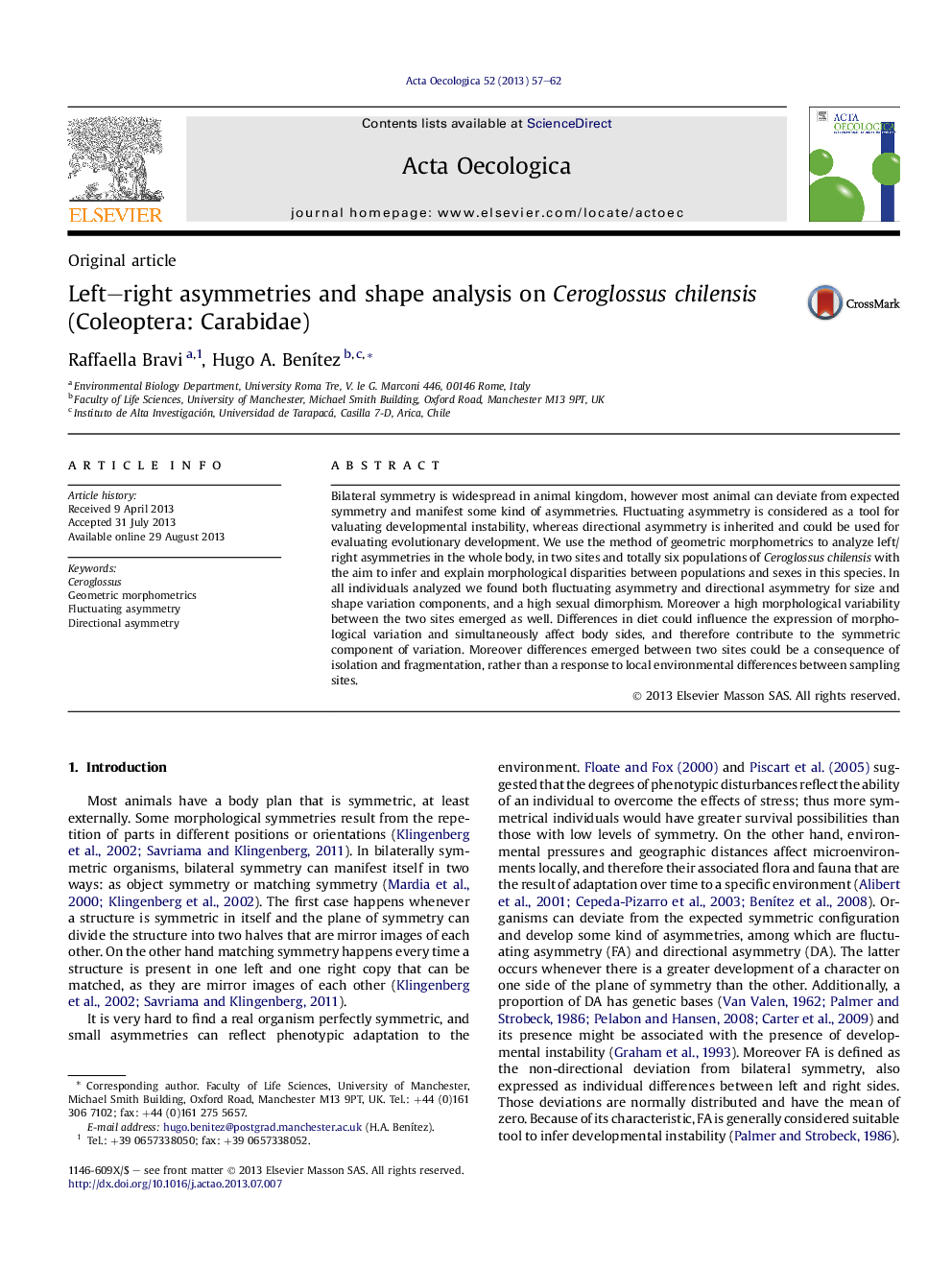| Article ID | Journal | Published Year | Pages | File Type |
|---|---|---|---|---|
| 4380887 | Acta Oecologica | 2013 | 6 Pages |
Abstract
Bilateral symmetry is widespread in animal kingdom, however most animal can deviate from expected symmetry and manifest some kind of asymmetries. Fluctuating asymmetry is considered as a tool for valuating developmental instability, whereas directional asymmetry is inherited and could be used for evaluating evolutionary development. We use the method of geometric morphometrics to analyze left/right asymmetries in the whole body, in two sites and totally six populations of Ceroglossus chilensis with the aim to infer and explain morphological disparities between populations and sexes in this species. In all individuals analyzed we found both fluctuating asymmetry and directional asymmetry for size and shape variation components, and a high sexual dimorphism. Moreover a high morphological variability between the two sites emerged as well. Differences in diet could influence the expression of morphological variation and simultaneously affect body sides, and therefore contribute to the symmetric component of variation. Moreover differences emerged between two sites could be a consequence of isolation and fragmentation, rather than a response to local environmental differences between sampling sites.
Related Topics
Life Sciences
Agricultural and Biological Sciences
Ecology, Evolution, Behavior and Systematics
Authors
Raffaella Bravi, Hugo A. BenÃtez,
